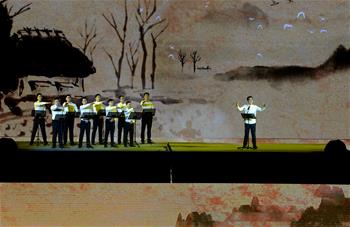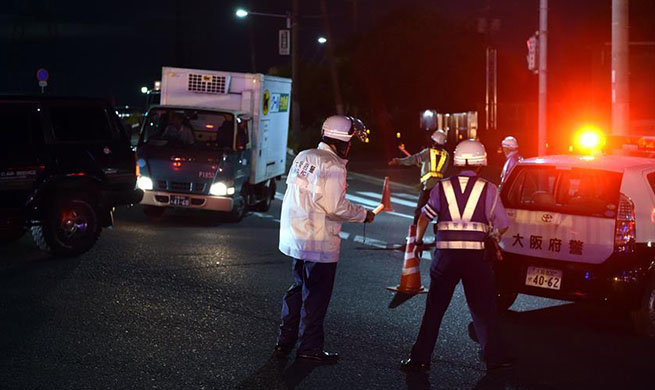CHICAGO, June 18 (Xinhua) -- A single missing iron atom in a key DNA repair protein may be the root cause for the development of an aggressive, early-onset form of colon cancer, according to a study jointly conducted by the University of Michigan (UM) Life Sciences Institute, the California Institute of Technology and the University of Southern California.
The findings are published on June 18 in Nature Chemistry.
The research started when a professor identified an unusual genetic mutation from a family of patients with early-onset colon cancer. Through genetic analysis, the researchers determined that the mutation was affecting MUTYH.
"This is an essential DNA-repair enzyme," said David Sherman, research professor at UM's Life Sciences Institute. "It scans along the DNA and, if there is a mutation, it can sense the mutation, cut out the bad base and put in a new one.
In order to know how it scans, the researchers have characterized the protein biochemically, and discovered that the mutation, called C306W, affects a portion of the protein that normally helps hold a critical co-factor made up of a cluster of four iron and four sulfur atoms inside the protein. The mutation causes the iron-sulfur cluster to be degraded when exposed to oxygen, resulting in a cluster with only three iron atoms.
And with that one iron atom missing, the MUTYH protein can't do its job.
Latest research demonstrates that there is electrical signaling working in human versions of DNA repair proteins, and that interruptions to this process may be linked to cancer.
"This ability of DNA to transmit electrical signals is essentially how MUTYH detects where there's a lesion, by virtue of this cluster of iron and sulfur atoms," Sherman said.
Normally, the iron-sulfur cluster on the protein allows electrons to pass in and out of the MUTYH protein, enabling it to receive signals about damaged DNA. With one iron atom missing, however, the protein is no longer able to receive and interpret the electronic signals being transmitted along the DNA strand. And without that signaling, it cannot find and repair a damaged gene.
Moreover, as this one mutation to the gene that makes the MUTYH protein disables it from repairing damaged DNA, it leads to further mutations across the genome.
"This mutation essentially allows the human genome to develop multiple mutations in other cancer repressors: proteins that actually can control the onset of malignancy," Sherman said. Enditem

















